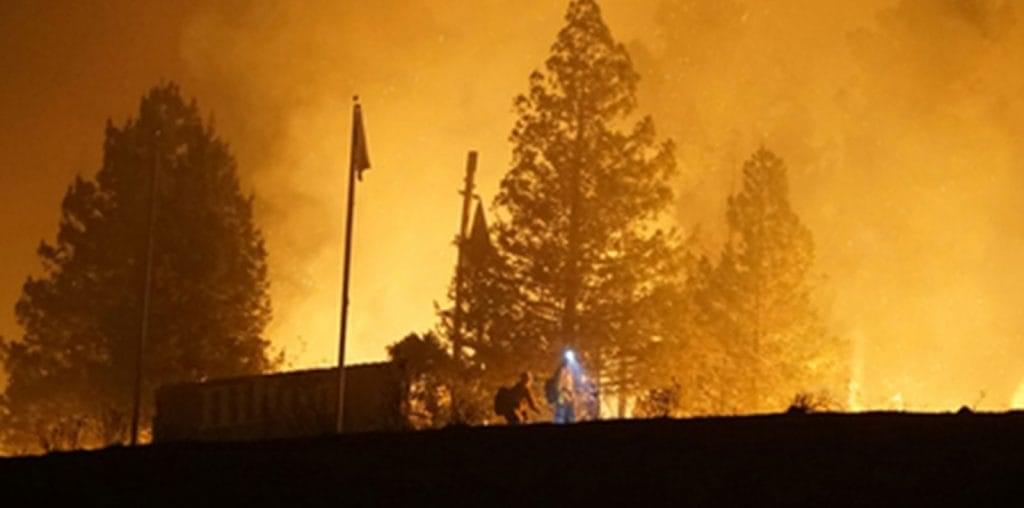
Unlike other countries who saw their national film industries begin in the safety of film studios and controlled outdoor settings, the Vietnamese cinema had its genesis on the frontlines of the successful military campaign to oust the illegal French colonial rule from Indochina in the 1950s. “Gao Rang” is a fascinating new documentary which details the primitive and violent birth of filmmaking in Vietnam during the war against the French and through the bloody conflict against American-lead forces in the 1960s and 1970s. Featuring footage never shown outside of Vietnam plus interviews with the pioneering filmmakers who photographed three decades of military conflict, “Gao Rang” is the rare documentary on filmmaking which opens doors to a rarely-seen corner of global cinema.
In the early 1950s, the North Vietnamese Communist leader Ho Chi Minh realized the propaganda power that films could provide in rallying the people behind his cause. However, Vietnam had no national cinema, and the few theaters were based in Saigon and presented French fare. “Gao Rang” offers the rare secret of how films came to Vietnam through an interview with pioneering filmmaker Khuong Me, who recalled undertaking a perilous clandestine mission to Saigon and setting up an address in order to receive shipments from Paris of a silent 16mm camera, film supplies, and (incredibly) two books on amateur filmmaking! From these do-it-yourself roots, filmmaking came to Vietnam.
“Gao Rang” wisely never pretends to acknowledge that the North Vietnamese films were anything more than black-and-white silent frontline footage saddled with propagandistic narrations regarding the “anti-American war” and the “flying pirates” who attempted to bomb the North Vietnamese into capitulation. (There is a brief and disturbing film scene where a captured American pilot is set upon by a crowd of villagers–the man’s identity and fate, unfortunately, are not revealed here). The Vietnamese filmmakers also ruefully note that government censorship prevented them from showing an honest depiction of the suffering and cruelty that war brought to the Vietnamese people–a marked contrast to the much-too-candid film footage that American camera crews brought back during the same years. The few times that the brutality of war could be honestly shown (i.e., a young girl badly disfigured by American bombing) was inevitably saddled with a propaganda rallying cry to fight harder against the enemy.
While the focus and personality of the Vietnamese films were crude, even by the low standards of Communist propaganda (there was a surplus of footage where comely peasant girls gleefully planted rice while carrying rifles or babies or both), the true drama came in the capturing the horrific images of war. The fact these films made it into a projector was a minor miracle: filmmakers were routinely shot at and injured while trying to lens the frontline conflict and Vietnam’s rainy and humid weather was an immediate enemy to the basic film technology. In getting around the extreme weather, enterprising cameramen kept their cameras and footage intact by storing their reels in boxes of fried rice–and the cameramen preferred to go hungry rather than consume the rice during periods of food deprivation (“Gao Rang” is roughly translated as “grilled rice”).
“Gao Rang” is blessed with insightful interviews by the men who captured the wars on film. Most notable are the recollections of May Loc, who shot the first Vietnamese footage of a guerrilla explosion of a Saigon-bound train in 1953…only to find himself and his equipment tumbling into a river during a bomb-heavy counterattack. Ngoc Quynh recalls his mania for trying to film as many departing North Vietnamese soldiers as possible prior to the Battle of Dien Bien Phu, knowing that many of the young men would never return alive. And Lo Van Minh, in recounting how he filmed an American bombing raid on Hanoi, becomes discouraged as a raconteur and literally grabs the camera from the “Gao Rang” cinematographer to provide a P.O.V. tour of where his camera found American jets racing across the Vietnamese skies.
One would imagine that the Vietnamese government would go out of its way to preserve the cinematic record of its military victories, but strangely the exact opposite has occurred. It seems that film preservation is not within the priorities or budget of Vietnam’s government and many of the reels from the 1950s through the 1970s have been oxidized beyond repair due to improper storage in humid vaults; some films are being “recycled” to capture the traces of silver contents in the celluloid, with the images being thoroughly erased. Whether this is due to either stupid neglect or a genuine embarrassment of the shrill Communist past by the current investment-seeking regime in Hanoi is not explained. Outside of a relatively few titles which have been transferred to video, many of the films are either in danger of disappearing forever or have already been lost. “Gao Rang” thus becomes both a celebration of a strange chapter in film history and an obituary to a unique celluloid record which is quickly wasting away into rot.

